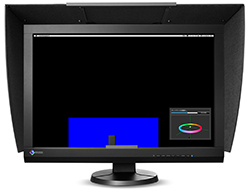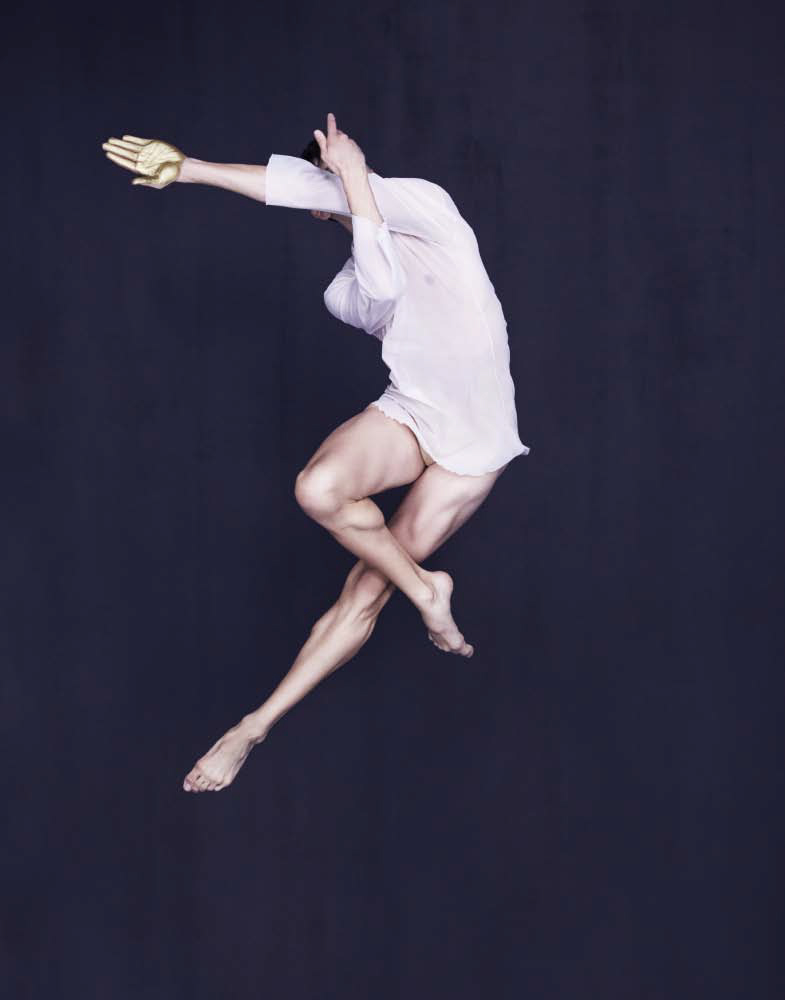|
What type of equipment do you currently use and what advantages do you get from these products?
 Of course my EIZO CG246 monitors are part of my permanent gear list – we use at least 3 on set at any time, and sometimes more! There are always two on the computer cart: one for my tech and one for the client. Then there is a third on a stand near me on set, that way I can keep right on top of the shots and not have to move from the camera. I am obsessed with different stands to put that monitor on, low ones for when I’m shooting from the floor and taller ones for when I’m standing or on a ladder.
Of course my EIZO CG246 monitors are part of my permanent gear list – we use at least 3 on set at any time, and sometimes more! There are always two on the computer cart: one for my tech and one for the client. Then there is a third on a stand near me on set, that way I can keep right on top of the shots and not have to move from the camera. I am obsessed with different stands to put that monitor on, low ones for when I’m shooting from the floor and taller ones for when I’m standing or on a ladder.
I’m also currently obsessed with the Kobold line of continuous light and the Broncolor modifiers we use with them. It’s the same thing I love from the Broncolor flash products (which we also use all the time) but with the advantage of being able to light the stills and videos with the same source. It’s genius.
How subjective would you say equipment choice is? (Will what works for one photographer necessarily work for another?)
I can’t speak for other photographers but as for myself I am quite particular about my equipment choices. Not only am I incredibly loyal to my favorite brands but I also truly LOVE the products I use since I trust them for my most important photo shoots. I have been using much of the same equipment since I started in this industry and when something breaks or needs replacing I rarely change brands.
Where do you get your inspiration?
I find inspiration everywhere from museums, theater, old and new films, or just from people I see on the street. I try to look at everything all the time. I actually sometimes go for long walks through New York City with just an iPod and an open mind just to people watch and get ideas.

Do you prefer digital to film when shooting?
I know this sounds crazy but I came into my career when digital was a new tool and people were still choosing between the two. Since I’m definitely a computer nerd and I love technology I started shooting digital immediately and developing a distinctly digital vision and workflow right from the get go.
How much is color management a part of your workflow?
Color management is as important as brushing my teeth in the morning. Both are REQUIRED. I wouldn’t walk into a shoot without a minty fresh mouth and I certainly can’t imagine a day when we wouldn’t calibrate before a shoot. I trust my monitors and my clients always want to see what they are going to get.
Are there specific techniques that are always a part of your workflow?
Once we're done calibrating at the beginning of each shoot, I’m a big fan of setting up a general setting / neutral in Capture One. It incorporates some basic settings for color, contrast, and saturation that I consider to be ESSENTIAL when you are building your shot from scratch. I hate that “digital” look that comes from images that are just out of the box. Then, after we get the light right I’m really into modifying the settings on the computer to get the right look and feel. Digital photography is such a great medium because it allows us photographers so much control.

Do you prefer studio or location shooting? Why?
I love shooting wherever and whenever the shoot requires, but I have to say that I LOVE shooting in my NYC studio (it’s a huge loft in the middle of Union Square) because it’s more like being at home than working. I’ve been here for 12 years and I have everything I could possibly think of in my equipment room.
There seems to be more and more successful women in photography than ever before, what are your thoughts about the trend for women in the photography industry?
I remember when I started and people always commented on how rare it was to be a woman in this industry. I’m really proud and happy to see so many women shooters these days. I mean, we know the subject matter and we wear the clothing, makeup and buy the brands we are shooting. Why not excel as the image makers, as well? It’s so much fun to see the shift to female visionaries – and I’m proud to be part of this group.
Are there any noteworthy highlights/challenges you have experienced in your career history?
I love the shift to video that I have made over the past few years. It’s so much fun to create imagery for moving image. I think the transition makes perfect sense and there is definitely a feeling of freedom and innovation that I experience when I’m directing. I really LOVE it.
I also think that, in the stills department, there is a shift to creatively build on set. What I mean by this is that I often take an image and then modify it in Photoshop by comping or rough retouching. The clients love seeing their visions come to life – putting the images into the layout and then sending them home with a close to finished product.
 |
What advice would you give a newcomer who is just beginning their career? (Any Do’s and Don’ts)
DO: Learn the rules – and then promptly break them!
DO: Always LISTEN to your clients, even what they don’t tell you
DON’T: Never say anything about someone in the industry you wouldn’t repeat to them to their face.
DON’T: Don’t be afraid to try new things – you won’t learn anything without making mistakes.
Photos courtesy of Sarah Silver Photography
 “I trust my monitors and my clients always want to see what they are going to get.”
“I trust my monitors and my clients always want to see what they are going to get.”